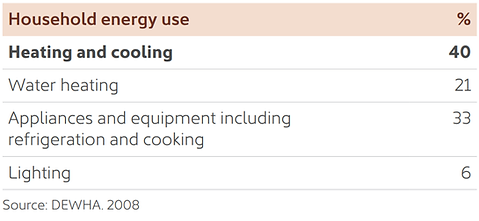Thermal Performance Assessments and Certificates
Servicing all NSW, ACT, QLD, VIC
**Call now to meet the minimum building standards and create a greener Australia**
ENERGY ASSESSMENTS - QUICK TURNAROUND SERVICING
High Volume Builders
Custom Builders
Architects
Building Designers/Draft Person
Owner Builders
Developers
MEASURING RESIDENTIAL BUILDING ENERGY EFFICIENCY
Building regulation for energy efficiency was introduced into the Building Code of Australia in 2003. The energy efficiency of residential buildings can be measured using accredited simulation software known as Nationwide House Energy Rating Scheme (NatHERS) software. The software estimates the internal temperature in each room of a dwelling for each hour of the year based on assumptions about occupant behaviour, information about the structure and specification of the place and standard weather data for the dwelling’s location.


ACHIEVING AN OPTIMAL NatHERS STAR RATING
The internal temperature is compared against a comfortable temperature range and occupancy pattern to estimate the annual heating and cooling loads per square metre of floor area to keep the temperature within the comfort range. The loads are adjusted and converted into a star rating between 0 and 10. A 10-star home is unlikely to need artificial cooling or heating to maintain comfortable internal conditions, whereas an O-star home would offer virtually no protection from the external temperature. The BCA sets a minimum acceptable thermal performance rating by specifying a minimum star rating.
With over 30 years of experience in Commercial, Residential, Retail, Industrial, Utilities, Aged Care and Multi-Unit construction, 10 Star Building Assessments can assist in achieving compliance under the National Construction Code and providing recommendations to improve your rating.
THERMAL ENERGY IMPROVEMENT, ADVICE AND RECOMMENDATIONS. NEW AND EXISTING DWELLINGS
Uncontrolled heat loss or gain within a building is directly linked to the energy consumption a dwelling use.
To determine the compliance with energy efficiency requirements of the building fabric of a residential building, a thermal performance assessment (viz. Energy Rating) must be undertaken.
The thermal performance assessment is a comprehensive evaluation of building envelope performance which includes:
Construction materials
Window glazing specification and orientation
Insulation details
Orientation of the building
Shading
Screening
Thermal Mass
Climate Zones
Wind Direction


DETAILED ANALYSIS AND RECOMMENDATIONS
10 Star Building Assessments provides a detailed analysis of a dwelling, room by room, to see where the most significant heat gains or losses occur. The difference between a 1-star and 6+ star rated building equates to thousands of dollars or tens of thousands of dollars over the life span of a dwelling.
Assessments by 10 Star Building Assessments will provide recommendations and assumed costs or outlays to improve the thermal performance and reduce the energy consumption of a dwelling. The graph above demonstrates how significant thermal improvement is, as up to 40% of typical energy use is from additional heating and cooling. Projected average home energy use in 2012 — actual energy use varies from state to state (particularly with climate) and from home to home, depending on the heating and cooling systems in the house and how they are used.
Get expert recommendations to improve the energy efficiency of your building.

